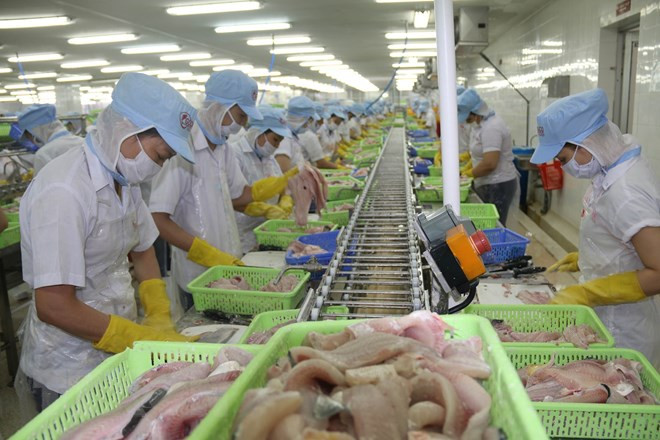Hanoi (VNA) – The trade war betweenthe US and China is causing widespread concern over possible risks posed to theglobal economy, including that in Vietnam. However, the conflict can bringabout indirect opportunities for Vietnam if the country knows how to grab holdof the situation, according to a local economist.
For Professor Pham Tat Thang, senior researcherat the Trade Research Institute at the Ministry of Industry and Trade, it seemsas though no one will win in the US-China trade war, neither the two nations involvednor the world’s economy.
First of all, this war is threatening theglobal economy as it goes against the global trend towards trade liberalisationand triggers the rise of protectionism. It could result in a global economicslowdown and impact Vietnam’s economy in a bad way, Thang explained.
Chinese products and projects will not be allowedto make their way into the US like before so Chinese government and enterprisesare likely to find alternatives for them in neighbouring markets like Vietnam,he noted.
Once Chinese exports scale down, reducing itsliquidity, demand for imports in China will also decline. This, together withChina’s escalation of trade barriers, could hurt Vietnam’s exports to theneighbouring country, which have experienced upturn in recent years, accordingto the researcher.
However, Chinese products hit by high tariffs willlose their competitive edge in the US, opening the doors for similar goods fromVietnam. Hence, if Vietnam can make the most of the situation, it could turnchallenges into opportunities.
On the other hand, Thang warned that Chineseexporters are likely to try to find a way around to disguise their origin of goodsto avoid the US tariffs. For example, they could fake that their products are originating inVietnam, he said.
“If we don’t stay on watch and this happens, itwill harm the Vietnam-US trade relations as well as national interests in thelong run,” he added.
The economist urged Vietnamese enterprises to beaware of technical trade barriers in each foreign market as well as to stay upto date in related regulations in order to survive the turmoil of protectionismin the global trade.
As foreign countries are raising tradebarriers, domestic firms must be updated on the changes to be able to satisfynew requirements, he suggested. They should also cooperate with each other toprotect themselves and prevent violations occuring, he noted.
The trade war between the US and China officiallycommenced on July 6 after the US pulled the trigger on 25 percent duties on approximately34 billion USD worth of Chinese machinery, electronics, and high-tech equipmentimports.
This is onlyWashington’s first step in a trade confrontation that is likely to hurt notonly the economies of the US and China, but also threaten global economicinstability. Vietnam is also set to become embroiled in the conflict as boththe US and China are important trade partners for the country.
Last year, China wasthe largest trade partner of Vietnam. The bilateral trade between the two sideswas estimated at 93.8 billion USD, of which exports to China reached 35.3billion USD, up 60.6 percent year-on-year, and imports from China totalled 58.5billion USD, up 16.9 percent year-on-year.
Vietnam’s tradedeficit with China was 23.3 billion USD, down 17.4 percent.
The US ranked thirdin bilateral trade with Vietnam with 50.7 billion USD, of which export valueshit the highest level of 41.5 billion USD, a year-on-year increase of 8percent, and import values stood at 9.1 billion USD, up 4.9 percent. –VNA






























